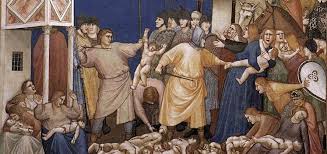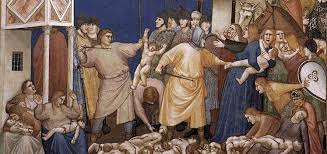 Just what was Matthew’s point in using the phrase “to fulfill” (or something very similar to it) five times in his first two chapters? Why does he grab the Old Testament to help us understand what was going in his own time frame?
Just what was Matthew’s point in using the phrase “to fulfill” (or something very similar to it) five times in his first two chapters? Why does he grab the Old Testament to help us understand what was going in his own time frame?
One writer who explains the answer well in an entire book is Christopher Wright. And his insightful work, “Knowing Jesus Through the Old Testament,” is simply excellent. With clarity and conviction, Wright exclaims Matthew’s goal: to show that Jesus is not only the completion of the Old Testament story, but also the fulfillment of the Old Testament promise. (Check out my 6-part review beginning here.)
But if you don’t have time for a whole book, consider another author who does a great job in one article—Matt Smethurst. His piece, “King Herod, Baby Jesus, and the Charge of Lousy Exegesis,” is, in my opinion, superb. As he states, Matthew is “showing his readers how Jesus Christ fulfills all the hopes and relieves all the tensions of the Old Testament and the history of Israel.”
I won’t reprint the entire article here, mainly because it deals with a larger issue than Matthew’s intent. But I would like to post the section that focuses on one of the scenes I’ve dealt with in a message at First Family. Why? For those who attend where I pastor, perhaps this will provide even more insight into the text and bring even more credibility to this season’s Christmas series at FFC.
In Matthew 2, having just learned of Herod’s scheme to massacre every Bethlehem male under the age of two, we read in verses 17–18:
“Then was fulfilled what was spoken by the prophet Jeremiah: ‘A voice was heard in Ramah, weeping and loud lamentation, Rachel weeping for her children; she refused to be comforted, because they are no more.’”
It’s important to note that the quoted verse, Jeremiah 31:15, is situated in a setting of hope. In fact, it’s the lone note of doom in a symphony of grace. Taken as a whole, Jeremiah 31 is a complex of promises revealing what God will do in the future for his soon-to-be-exiled people. Judgment won’t be the last word. There will be life after Babylon when he returns them to their land, restores their fortunes, and grants them hearts to obey.
Ramah, a little town about six miles north of Jerusalem, was the site where the Jewish captives were rounded up before their death march to Babylon. To the Jews, then, it came to represent a place of heart-wrenching agony. Ramah was where friendships got ripped asunder, where husbands gazed on their wives for the last time, where children were pried from the fingers of wailing mothers. As the idealized mother of Israel, Rachel weeps over the impending slaughter of her descendants at Babylonian hands.
But why does Matthew grab Jeremiah 31:15 to make sense of the Bethlehem massacre? It’s not as if that verse is a prediction—it isn’t even in the future tense. How, then, can he see it finding fulfillment in the events surrounding Herod’s holocaust?
On one level, the verse is no doubt a poignant reminder that God works to bring blessing through disaster, life through death. Just as the horror of Jeremiah 31:15 is planted in the soil of future hope, so Matthew’s readers can rest assured that Herod’s murderous machinations will finally fail. The newborn King will be spared.
But is that it? Does Matthew simply want us to assure us that God will bring blessing out of bereavement?
I think there’s a bit more going on. Matthew understands Israel’s long exile—her banishment because of sin—to have finally reached its climax. The end is now in sight. Indeed, Rachel’s weeping is about to cease, for God’s Messiah has finally come to bring an end to Israel’s—and humanity’s—exile from God’s favor and blessing.
Matthew is showing us that the King is on the scene to bring God’s people home, and no human monarch can stop him. Jeremiah 31:15 was couched in the hope that God wouldn’t leave his people in exile forever. In Jesus he has arrived to accomplish that homecoming—not simply from Babylon to Israel, but from judgment to forgiveness and from death to life.
The tears of the exile, then, are finally being “fulfilled,” for the tears begun in Jeremiah’s day reach their climax in the tears of the mothers of Bethlehem. David’s royal heir has arrived, the exile is ending, and God’s true Son will soon inaugurate the new covenant promised in Jeremiah 31.
So does Matthew play fast and loose with the Old Testament in order to suit his purposes? No. Rather, he’s showing his readers how Jesus Christ fulfills all the hopes and relieves all the tensions of the Old Testament and the history of Israel.
Amen, Matt! It’s all about Jesus…Merry CHRISTmas!
